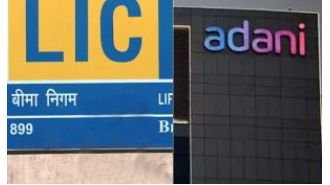The Present Value Of Future Cash Flows
My friend Pravin sent me an email last week after my "How To Calculate A Return On Investment" post. He said:
I wish there was a class that I could take that would teach me how to properly research stocks/companies for investment purposes and how that could be made into a private tutoring business. It'd be for people like me, people who didn't go to school for business but still are interested in understanding all the jargon, methods of investing, etc and how to apply it to a buy and hold strategy.
Pravin then went on to say that the post I wrote was exactly the kind of thing he was looking for and that he'd like to see me do more of it. So with that preface, I'd like to announce a new series here at AVC. I'm calling it "MBA Mondays". Every monday I'll write a post that is about a topic I learned in business school. I'll keep it dead simple (many people thought my ROI post last week was too simple). And I'll try to connect it to some real world experience.
I'll start with the topic Pravin wanted some help with: how to value stocks, what they are worth today, and what they could be worth in the future. This topic will take weeks of MBA Mondays to work through but we'll start with a fundamental concept, the present value of future cash flows.
I was taught, and I believe with all my head and heart, that companies are worth the "present value" of "future cash flows". What that means is if you could know with certainty the exact amount of cash earnings that the company will produce from now until eternity, you could lay those cash flows out and then using some interest rate that reflects the time value of money, you could calculate what you'd pay today for those future cash flows.
Let's make it really simple. You want to buy the apartment next to you for investment purposes. It rents for $1000/month. It costs $200/month to maintain. So it produces $800/month of "cash flow". Let's leave aside inflation, rent increases, cost increases, etc and assume for this post that it will always produce $800/month of cash flow.
And let's say that you will accept a 10% annual return on your investment. There are a multitude of reasons why you'll accept different interest rates for different investments, but we'll just use 10% for this one.
Once you know the cash flow ($800/month) and the interest rate (also called the "discount rate"), you can calculate present value. And this example is as easy as it gets because the cash flow doesn't change and the interest rate is 10%.
The annual cash flow is $9,600 (12 x $800) and if you want to earn 10% on your money every year, you can pay $96,000 for the apartment. In order to check the math, let's calculate 10% of $96,000. That's $9,600 per year.
In practice, it is never this simple. Cash flows will vary year after year. You'll have to lay them out in a spreadsheet and do a present value analysis. We'll do that next week.
But it is the principle here that is important. Companies (and other investments) are worth the "present value" of all the cash you'll earn from them in the future. You can't just add up all that cash because a dollar tomorrow (or ten years from now) is worth less than a dollar you have in your pocket. So you need to "discount" the future cash flows by an acceptable rate of interest.
That basic concept is the bedrock of all valuation concepts in finance. It can get incredibly complex, way beyond my ability to calculate or even explain. But you have to understand this concept before you can go further. I hope you do. Next week we'll look at using spreadsheets to calculate present values.






